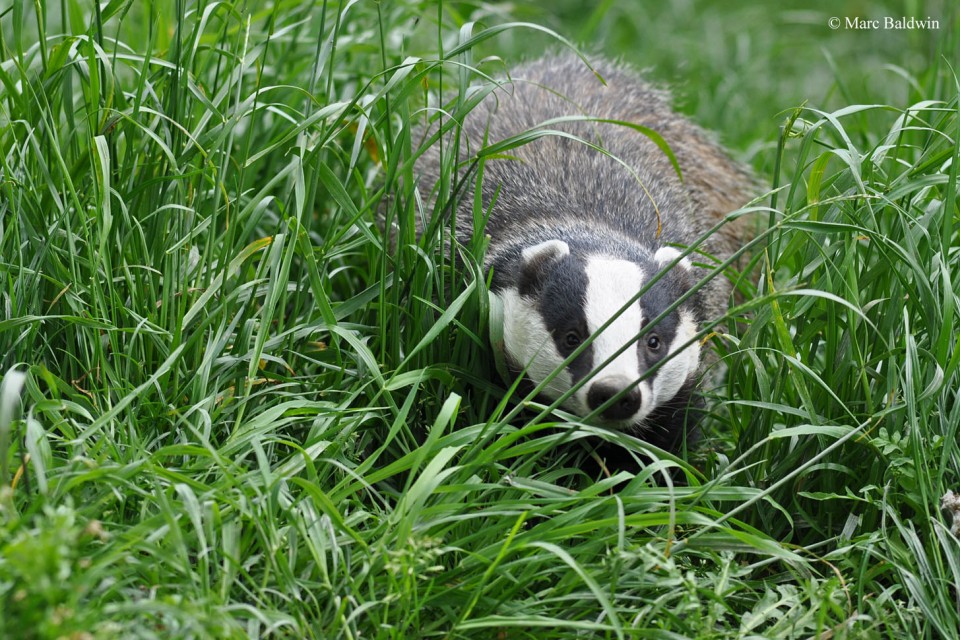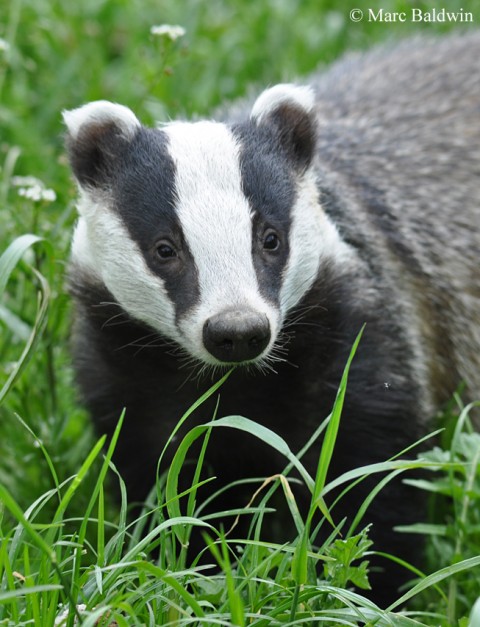European Badger Behaviour - Dispersal

Dispersal is the process of leaving one home territory and moving to live on another, either permanently or for a significant temporary period (e.g. months or years). Temporary visits to neighbouring social groups (which appear common among badgers) are not considered dispersal. In most animals, males leave the family group when they become sexually mature, often chased out by the dominant male and, hence, family groups tend to consist mainly of females. In badgers, however, the situation is different, particularly in the high-density populations of southwest England.
Broadly, in high density populations such as those at Woodchester Park or Wytham Woods dispersal rates are low. Indeed, most badgers growing up here will stay in their family clan their entire life. Dispersal does happen, but it’s infrequent and unpredictable. Nonetheless, one study on the well-established sett at Woodchester Park in Gloucestershire found that badgers of all ages permanently dispersed, with a tendency to move to smaller clans. In some years, some social groups appeared in a neigh-constant state of flux. In their comparison between Woodchester and a population in suburban Bristol, Chris Cheeseman and colleagues observed the dispersal was more likely in urban than rural populations. Truly itinerant badgers, i.e. those without a fixed social group, were rare.
In a paper in the journal Ecology David Macdonald analysed 17 years of data from a marked population of badgers in Oxford and reported that 35% of individuals never dispersed from their natal territory and in those that did, dispersal distances only rarely exceeded two or three home range diameters. Overall, these and other data show that although excursions into neighbouring territories for the purposes of mating are common, as a species, badgers have low dispersal rates and at a local scale are genetically depauperate (i.e. local mixing of genes is severely diminished).

The age of dispersing individuals may be as young as seven or eight months, although most dispersal is among sexually mature animals (i.e. more than two years old). There is no consistent pattern in dispersal according to sex. Females are more prone to dispersal in some populations, males in others, although dispersal of both sexes appears more likely in disturbed populations. Tim Roper and colleagues reported three males dispersing as a “coalition” during their study on the South Downs, while Rosie Woodroffe and co-workers reported the same for females in Wytham Woods – one female dispersed alone, while all the others left in groups of two or three animals. Woodroffe and her colleagues also observed that these coalitions often travelled long distances to settle in territories occupied by a single female. Some resident females also dispersed following the arrival of immigrant badgers, suggesting territories may sometimes be “taken over” and the residents forced to leave.
What triggers dispersal isn’t known, but it likely varies between clans. Disturbance appears to be the trigger in some cases, in others it’s linked to population density (less likely at higher densities, particularly for males). Badgers also have upped sticks and left for no reason obvious to us. Food availability does, however, seem to be a trigger in many cases, with clans breaking down when food resources become less abundant and/or predictable. A study by Eloy Revilla and Francisco Palomares published in the Journal of Animal Ecology found that prey type may influence dispersal, as well as clan behaviour and structure. The researchers found that on their study area in southwest Spain, badgers primarily ate rabbits and territories were occupied by small clans consisting of a breeding pair and some cubs from both the current and previous year’s litter. Dispersal in these clans occurred during the mating season of their third or fourth year of life.
Dispersal may also be impacted by the landscape, affecting how easy it is to move away. A study by a team led by Alain Frantz at the University of Sheffield and published in Molecular Ecology during 2010 looked at how landscape features affected dispersal among badgers in four areas of the UK. The researchers found that while badgers readily crossed small rivers and roads, wide rivers and busy motorways were barriers to movement, reducing dispersal and potentially isolating populations and reducing gene flow.
Finally, increasing social tensions may be one route by which cubs are driven out. In Badgers of Yorkshire and Humberside, Adrian Middleton and Richard Pagent note how prolonged “whickering” vocalisations between the adults and cubs immediately preceded the cubs disappearing during two autumns at a sett in west Yorkshire. The authors suggest that this squabbling with adults in the clan may be a prelude to cub dispersal before the winter arrives and the sows comes back into season.
Dispersal can happen at any time, although in the UK badgers seem to experience two distinct socially-unsettled periods: March to April and August to September. The first of these periods is often because cubs are killed while exploring their home range and the second roughly corresponds to both the main dispersal period.